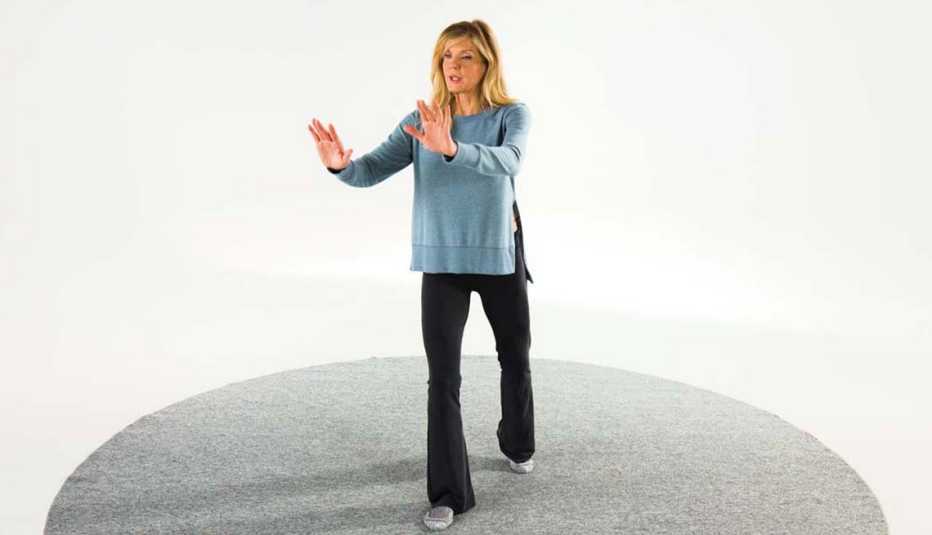AARP Hearing Center


In the workout world, tai chi is more tortoise than hare. But just like in the fable, its slow and purposeful moves can actually help you go the distance.
Combining controlled, choreographed postures with a side of spirituality, tai chi is loosely based on Chinese martial arts and arrived on our shores in the 1940s — a time when no one could have predicted how many health studies would one day center on it.
But while you might be able to imagine how this “meditation in motion” could help lower blood pressure and stress or boost the immune system, there are muscle-building benefits to tai chi, too.
Some of those derive from how you complete many of its repetitive, upright moves — creeping forward, shifting your weight from foot to foot — with your knees slightly bent. Doing that means you’re working the largest muscle groups in the body — the glutes and quadriceps — which are the first to atrophy as we age.
As it turns out, those muscles are also very important to balance. For that reason and others, beginner-friendly tai chi has been shown to be especially good at helping to prevent falls for people over 65. As such, the exercise is becoming a major line of defense against life-altering tumbles.
That's because recent government guidelines recommend exercise over other strategies like calcium supplements to prevent bone fractures related to falls, which means that getting serious about tai chi could be a very smart move indeed for those of a certain age.
What’s more, tai chi practitioners are also frequently reminded to “feel” the earth or be aware of the connection between their foot and the ground — something that can help them negotiate uneven surfaces more steadily and, possibly, to be a bit more grounded in their approach to life.

































































More From AARP